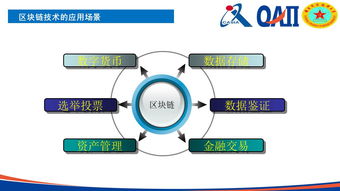Title: The Application and Future Potential of Blockchain Technology
Abstract:

Blockchain technology is a decentralized and secure method of recording transactions and storing data. It has gained widespread attention for its potential to revolutionize multiple industries, including finance, healthcare, and supply chain management, among others. This paper explores the basic principles of blockchain technology, its current applications, and its potential for future development. The paper also addresses some of the challenges and limitations of blockchain technology and discusses possible ways to overcome them.
Introduction:
Blockchain technology was first introduced in 2008 with the emergence of Bitcoin, which is a decentralized digital currency system. Since then, blockchain technology has advanced significantly and has found extensive applications beyond cryptocurrency. Blockchain is essentially a distributed ledger that records and verifies transactions between parties without the need for a central authority. This makes it highly secure, transparent, and efficient.
Current Applications:
Blockchain technology has numerous applications across various industries. In finance, blockchain technology is being used for secure and transparent transactions, reducing the need for intermediaries and increasing speed and efficiency. In healthcare, blockchain technology is used for secure and accurate recordkeeping and sharing to improve patient care. In supply chain management, blockchain technology is used for tracking and tracing products throughout their entire lifecycle, increasing transparency and reducing inefficiencies.
Future Potential:
As blockchain technology continues to develop, it has the potential to revolutionize multiple industries. For example, it could be used for secure and efficient voting systems, eliminating the need for paperbased voting that is vulnerable to fraud and inaccuracies. It could also be used for secure and transparent land registries and property rights, reducing the potential for disputes and errors.
Challenges and Limitations:
Despite its numerous benefits, blockchain technology faces several challenges and limitations. One of the major challenges is scalability, i.e., the ability to handle largescale transactions without significant delays. Another challenge is energy consumption, as blockchain networks consume a significant amount of energy to operate. Additionally, blockchain technology faces regulatory and legal challenges, as it is still a relatively new and untested technology.
Conclusion:
Blockchain technology has revolutionized multiple industries, providing secure, transparent, and efficient solutions for a wide range of applications. While there are challenges and limitations to the technology, it has immense potential for future development and growth. To overcome these challenges, continued research, development, and collaboration are necessary to ensure the continued success and growth of blockchain technology.
标签: 区块链技术应用英语 区块链技术英语翻译 区块链有关论文 关于区块链的英文文章







